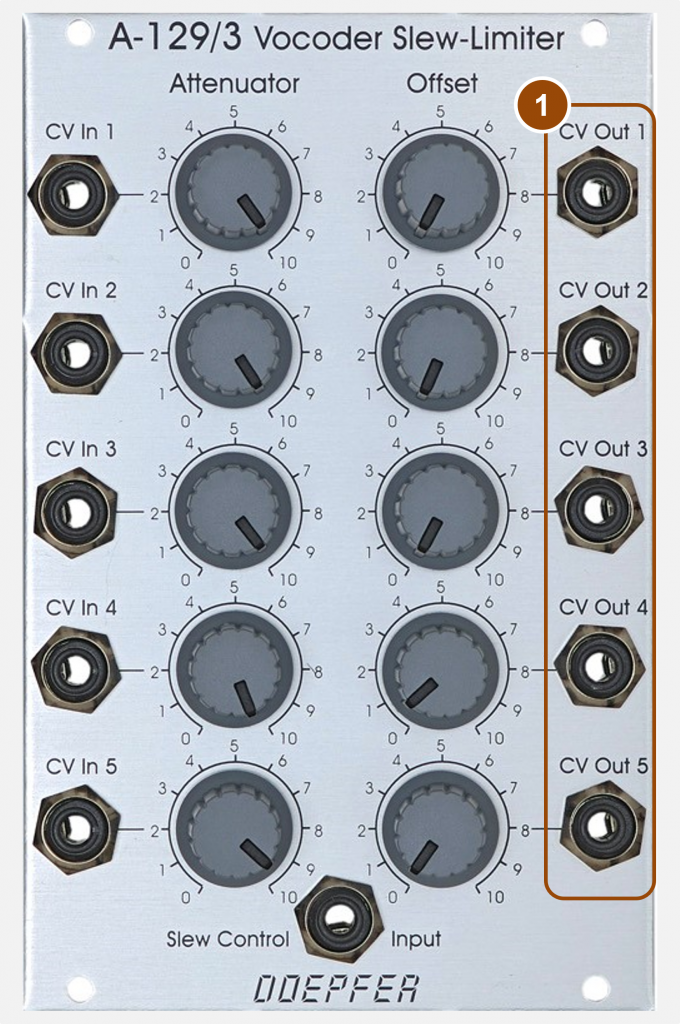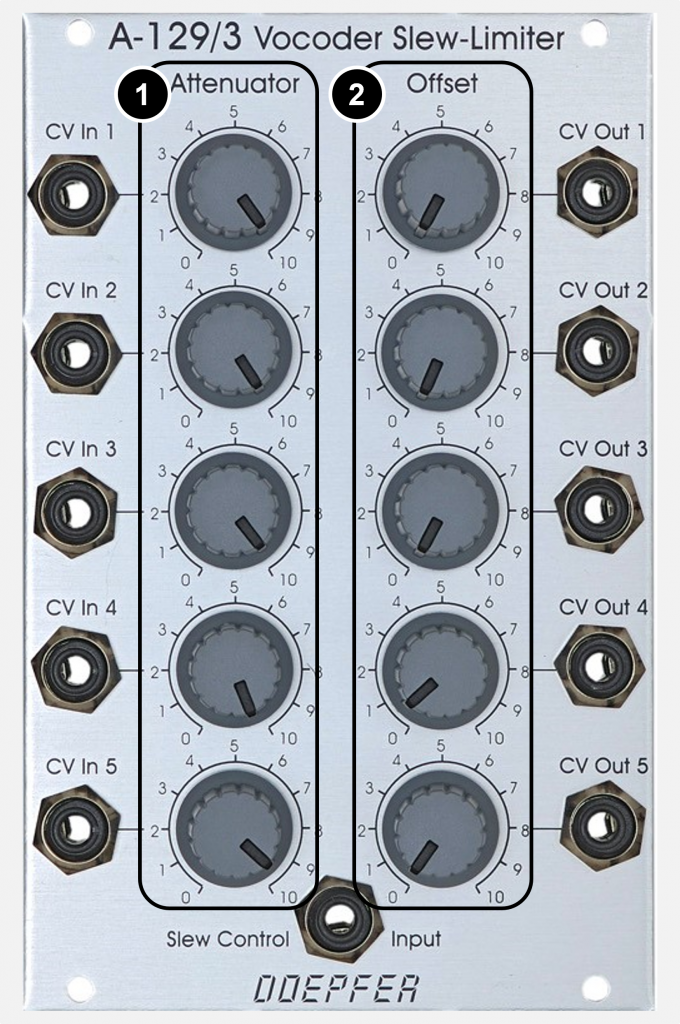The module is no longer in production.
The attenuator / slew limiter can be switched between the analysis unit A-129 / 1 and the synthesis unit A-129 / 2. This allows individual frequency bands to be attenuated or amplified (“offset” controller) or the influence of the carrier signal (usually a spoken voice) to be limited to certain frequency bands (“attenuator” controller).
In addition, the changes in the frequency bands can be slowed down or even “frozen” the entire filter spectrum via the additional module A-129 / 4 Slew Limiter Controller.
In order to control all frequency bands in this way, three attenuators / slew limiters are needed. And of course lots of patch cables…
User interface
Inputs:

- CV In (5-fold): Inputs for the control voltages. In vocoder mode, these are the control voltages from the outputs of the A-129 / 1 Analysis Section.
- Slew Control Input: Input for a control voltage that regulates the “slew rate” between all CV inputs and outputs: The applied voltage determines how much the voltages of the CV inputs are smoothed over time (this is basically the same as a portamento control does with the control voltage of a keyboard). Without voltage at this input there is no smoothing between inputs and outputs. An A-129 / 4 Slew Limiter Controller must be used to control up to 3 parallel A-129 / 3 modules.
Outputs:

- CV Out (5-fold): Outputs for the control voltages processed using the slew limiter, attenuator and offset controller. The processed voltage of “CV In 1” is present at “CV Out 1” and so on.
Controls:

- Attenuator (5-fold): Attenuator for the control voltages of the 5 CV inputs. This allows you to control in the vocoder how strongly a frequency band from the carrier signal (speech input in module A-129 / 1) can affect the result.
- Offset (5-fold): There is an offset control for each of the 5 CV outputs. This means that a fixed output voltage can be set even without any input voltage, to which the (possibly additionally attenuated) input voltage is then added.
Fine adjustment of the vocoder
With the help of the attenuator controls, the vocoder system can be adjusted very finely and the influence of individual frequency bands can be reduced. This does not necessarily have to be all 15 frequency bands, so that you can work with just one or two A-129 / 3 if necessary.
Fixed Filter Bank
With three A-129 / 3, the synthesis unit of the vocoder can be used – among many other things – like a static fixed filter bank: The offset controls determine the level of the individual filters.
Possible uses outside of the vocoder
In addition to being used in the vocoder, a fivefold attenuator / offset generator is a very useful tool and can at least partially replace several individual attenuators / offset generators, such as the A-183-2 (the A-183-2 also has a polarizer, however).
Sound examples
-
A-129/3 / Drums in vocoder with selective bands
In this sound example, the basic vocoder modules A-129/1 & 2 are additionally connected to three A-129/3 vocoder slew limiters. Carrier is colored noise from an A-118-1, “Voice” signal is a drum sequence from the “Easy Drummer” plugin. Some reverb and delay, as well as compression from the DAW.
I start with the vocoder’s LP filter and gradually fade in the higher frequencies manually with the A-129/3 modules, while at the same time removing bands from the lower sound spectrum again. Usually 2-3 bands are active. After that, I randomly and manually mix different frequency bands.
Drums in vocoder with selective bands.
Technical specifications
| Width | 16 HP |
| Depth | 60 mm |
| Power requirements | 40 mA (+12V) / -20 mA (-12V) |
